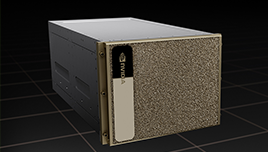Catch up on our recent newsletters
Here you will find an archive of our previous newsletters, bear in mind any offers or promotions may now be expired
View More ScanshotsHow AI is helping in Space Research

Artificial intelligence is enabling an exciting new era of enhanced capabilities and agencies such as NASA and ESA are embracing this to explore and apply new methods to critical challenges in earth science, space exploration and planetary stewardship. With our planet’s challenges mounting, data from satellites is enabling the investigation of phenomena such as frequent floods, superstorms and global wildfires, with the ultimate aim of prediction and forewarning - for the benefit of all humankind. Below are some examples of how Scan AI is helping research in the Space vertical:
FDL Europe 2022 – Live Twin: Hydrological Models
Can data-driven ML models, informed by real-time satellite data, build an end-to-end flood prediction system?FDL Europe 2022 was a research sprint hosted by the University of Oxford that took place over a period of eight weeks in order to promote rapid learning and research outcomes in a collaborative atmosphere, pairing machine learning expertise with AI technologies and space science. The interdisciplinary teams address tightly defined problems and the format encourages rapid iteration and prototyping to create meaningful outputs to the space program and humanity. This teams question was “Can data-driven ML models, informed by real-time satellite data, build an end-to-end flood prediction system?”

The Hydrological models FDL team was able to predict with good accuracy the flood risk one day ahead of time. The models also demonstrated accurate high peak flow locations although the magnitude of these peaks was not so well defined. With unseen basins and climate zones the models also performed well, supporting the generalisability claim and the need to train models with globally available data. Further work will focus on whether training data from satellites could be replaced with forecasted data for inference, as this may improve accuracy and length of prediction window.
NVIDIA is a key supporter of the Frontier Development Lab and the FDL Europe 2022 event, and Scan AI was asked to act as a technology partner of NVIDIA to provide access to multiple DGX appliances in order to facilitate much of the machine learning and deep learning development and training required. The FDL Aerosols team used Google Cloud Platform (GCP) instances to prototype their models, prior to trained models then being deployed on a NVIDIA DGX platform in order to accelerate time to results.
FDL Europe 2022 – Live Twin: Aerosols
Understanding how aerosols and other emissions from extreme fires affect weather and climate.The second team that Scan AI worked with at FDL 2022 were tasked with “Understanding how aerosols and other emissions from extreme fires affect weather and climate”.

The result was “Pyrocast”. Pyrocast is the first generation of an end-to-end pipeline to monitor, forecast and understand the drivers behind pyroCb clouds caused by extreme wildfires. The Pyrocast database provides the most comprehensive pyroCb dates with labelled geostationary satellite images and associated data for 111 individual wildfire events. The Pyrocast forecasting model has demonstrated an ability to predict behaviour over a six-hour horizon with the Pyrocast Discovery Framework showing that the most important predictors of pyroCb events were shown to be boundary height layer, followed by convective available potential energy (CAPE) and surface-level zonal wind velocity.
NVIDIA is a key supporter of the Frontier Development Lab and the FDL Europe 2022 event, and Scan AI was asked to act as a technology partner of NVIDIA to provide access to multiple DGX appliances in order to facilitate much of the machine learning and deep learning development and training required. The FDL Aerosols team used Google Cloud Platform (GCP) instances to prototype their models, prior to trained models then being deployed on a NVIDIA DGX platform in order to accelerate time to results.
Scan AI’s suggested solutions for the Space Research industry
NVIDIA DGX H100The ultimate AI infrastructure system
 FIND OUT MORE >
FIND OUT MORE >
The fourth generation DGX AI appliance is built around the new hopper architecture, providing unprecedented performance in a single systems and unlimited scalability with the DGX POD and SuperPOD enterprise-scale infrastructures.
NVIDIA Omniverse EnterpriseA platform for real-time collaborative working
 FIND OUT MORE >
FIND OUT MORE >
NVIDIA Omniverse Enterprise provides a single platform where incompatibles are a thing of the past, real-time collaboration is straight forward, and location is no longer relevant.
Follow Scan Computers on:



